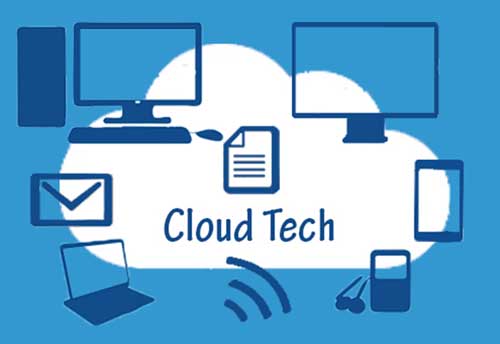Impact of Enhanced Standards for Credit Rating Agencies on SMEs
Updated: Jan 13, 2017

Impact of Enhanced Standards for Credit Rating Agencies on SMEs
The year 2015 saw a sharp downgrade in the credit rating of Amtek Auto leading to redemption crisis in J P Morgan Asset Management Company. The rating agencies came in for a lot of criticism. Year 2016 posed a similar position for the rating agencies; however, they were cautious this time and took care in staggering the downgrade, though in a short span of 6 months’ time from AA to D. Notably, Jindal Steel and Power being one of such downgrade did not attract media attention, nevertheless students of credit risks and some investors were justifiably disturbed when the weak indicators and credit metrics that were already visible for more than a year were not considered when initial ratings of AA were assigned to Jindal Steel (see our detailed blog on the subject at https://crededge.wordpress.com/2016/10/10/an-astonishing-account-of-credit-rating-actions-by-cras-aa-to-d-in-6-months-jspl-rating/).
Possibly taking into account such rating actions, clearly indicative of sub-standard analysis, SEBI decided to come up with Enhanced Standards for Credit Rating Agencies on November 1, 2016 (see http://www.sebi.gov.in/cms/sebi_data/attachdocs/1477999985100.pdf). The enhanced standards have been issued as guidelines with a direction that the guidelines be effectively implemented within 60 days i.e. not later than January 1, 2017. The guidelines cover major areas such as:
- Formulation of Rating Criteria and rating processes and public disclosure of the same.
- Accountability of Rating Analysts
- Standardisation of Press Release for rating actions.
- Functioning and evaluation of Rating Committees/Sub-Committees.
- Disclosure of ratings in case of non-acceptance by an issuer
- Disclosure in case of delay in periodic review of ratings.
- Policy in respect of non-cooperation by the issuer.
- Strengthening and enhancing the relevance of Internal Audit of CRAs, viz. appointment and rotation of auditors and scope of the audit.
Given the backdrop of Amtek Auto, Jindal Steel & Power and similar other cases, SEBI has now prescribed standard format for press release, mandating credit rating agencies to disclose the rating transition and history of all instruments of the company rated, in the past 3 years, irrespective of whether the rating is outstanding or not, on the date of the press release. Welcome change indeed! The enhanced standard is expected to bring-in more transparency and hopefully greater accountability on the Credit Rating Agencies.
While the disclosure of rating history for 3 years are welcome from the point of view of greater transparency and accountability on part of Rating Agencies, the disclosure guidelines prescribed are likely to have a negative impact on the SMEs. Attention is invited to -
- Disclose all ratings assigned, even if ratings are not acceptable to the issuer, even for non-public issue. Information like name of the issuer, name/ type of instrument, size of the issue, rating and outlook assigned, etc. Until now, an SME getting its issue rated for the first time by a rating agency had the option of not accepting the rating, if the rating was not acceptable to it. And the unaccepted (read ‘below investment scale rating’) rating remained known only to the rating agency and the issuer. Not anymore! Once the issuer has paid rating fee and provided information for rating, he loses control and whatever be the rating assigned by the rating agency, it would get disclosed.
- Some of the poorly rated issuers avoided subsequent disclosures by allowing the ratings to get suspended by not cooperating in providing the information. SEBI guidelines have put a stop on this practice as well. Rating Agencies are required to continue with the rating on best available information, even in case of non-cooperation by the issuer (such as not providing information required for rating, non-payment of fees for conducting surveillance) throughout the instrument’s lifetime. Further, in such cases the credit rating symbol shall be accompanied by “Issuer did not Cooperate” in the same font size, creating a far more adverse stigma. As the information of rating would be public, the issuer cannot avoid the comment by approaching another Rating Agency for a fresh rating. As per the guidelines, the new Rating Agency would get a clause inserted in its agreement with the issuer, to permit disclosure of previous history and rating status with other Rating Agencies, including the fact of non-cooperation of the issuer with the previous rating agency.
Prima facie the guidelines are positive, and in my personal capacity I welcome it. However, on a deeper consideration, it is felt that in view of the revised guidelines and enhanced standards for Credit Rating Agencies, they are likely to adopt a more conservative view on issuers by providing lower ratings whenever there may be even an iota of doubt. Mistakes like Amtek Auto and Jindal Steel bring in greater scrutiny and increased regulatory oversight. Rating Agencies don’t have anything to lose by being more conservative. Under regulatory environment where there is an implicit need imposed by the regulators for issuers to get their issue credit rated, there is no business-loss or sales risk as well for the Credit Rating Agencies.
On the other hand issuers, particularly SMEs have much to lose. The stakes for SMEs are very high – in addition to the business and operational stake, reputational stake, where below-par ratings get disclosed would tarnish their image in eyes of their customers, suppliers and also the banks. It may impact future business potential as well. It may also be noted that most SMEs have never got better credit rating (investment-scale ratings). It is a well-known secret that the primary metric considered while rating SMEs, is their operating scale and not much their credit behaviour or credit-worthiness (based purely on the assumption that larger companies have better withstanding capacity from external shocks). As such, hardly any SME with a turnover of INR 500 million (exceptions being SMEs with strong parentage in the form of subsidiaries of large corporates or multinational companies) can get an investment-scale rating of BBB- and above. As there is a strong linkage of collateralisation of credit exposures with the credit rating enjoyed by the issuer, most SMEs find it difficult in getting adequate credit for want of acceptable collateral security from the banks. Incidentally, paying higher interest rate due to low credit rating or ‘speculative’ credit rating is still acceptable to many SMEs.
Therefore, there is a strong need for some measures, namely
- Putting in place of a redressal mechanism, preferable in the form of a Rating Ombudsman wherein unhappy issuers who get unacceptable rating can approach for an impartial review.The Ombudsman can draw upon credit experts from retired Bank professionals with strong credit background, representatives from the rating agencies, a representative from any of the regulator(s) viz., SEBI / RBI
- Adopting a separate scale for credit rating of SMEs, so that size or scale-of-operation doesn’t have an overhang on the ratings assigned. Alternatively, the retail credit threshold stipulated by RBI under the Basel norms can be increased from INR 50 million to INR 500 million, which would fairly reflect the retail nature of credit portfolio viz., lending to majority of SMEs.
I do hope that the efforts to bring in greater transparency and accountability for Credit Rating Agencies and other regulatory mechanism in the form of Basle norms for banking sector acts as an enabler for the economy without creating hurdles in the growth of the SME sector.
About Author: Rajesh Dubey is the Partner with Mumbai based SME BOTS LLP, a firm advising smaller companies on IPOs. He is also the Financial Advisor to FISME








 Loading...
Loading...





COMMENTS
As a Director of a Private limited compapany, submitted an application for a term loan of Rs.40 lacks under TUFS (Technology Up gradation Fund Scheme) with SIDBI. I have produced my personal Pan No.to the bank on request. Next day the SIDBI Branch manager called me and informed me that the loan application can not be considered due to low CIBIL score of my personal transaction against my PAN card, (not company pan card). I as a Director of a Private limited company,I am not in a position to perform my duties to the company to strengthen its activities. How the company can be held responsible for my private transactions with the credit card banks? All other transactions with the company is perfect and there is no defaults. The company was granted 5 months back a car loan of Rs.15 lacks from a Bank. I wondered how my cibil score could be so low within few months. On my verification I found few of my credit card banks have reported to the sidbi of my 22 years transactions on August 2017 for the fist time. The report is not time tested.(though the facts of the report is under dispute and not adjudged by any courts of LAW) This sort of decision making of a governance body is an indication of succumbing to the wims and fancy of crony corporates to give arms to demonstrate and show their strength of power how they can mend and coerce the generic masses to their expected line of activities . The credit card regime is an unsolicited evil on Indian common man. I have preferred to do away with all the credit cards, and I am not using any credit cards for the 5 or 6 years. The way the sheduled Banks look at the credit cards as a measuring scale for the performance of a healthy SME is not justifiable. Verify the actual weihted and time tested methods in apprisal of MSME's thru service orinted sheduled Banks and Financial Institutions.Do not allow money growers in the economy planning of Indias growth. The question remains : CREDIT CARD IS A BANE O BOON